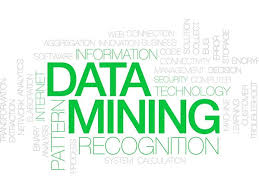Source: theday.com
What happens to artists when they have to answer to online polls?
Two decades ago, widespread adoption of the Internet created a seismic shift in artistic industries. Piracy, file-sharing and other freely available content disrupted (and sometimes destroyed) dominant players in music, film and other creative trades.
Now, we’re experiencing a sort of second digital disruption. But this one might instead enhance the ability of those same creative industries to make money − and entrench the position of today’s big corporate incumbents. That’s the thesis of a forthcoming law journal article from UCLA professor Kal Raustiala and New York University professor Christopher Sprigman. They argue that the explosion of “big data” has transformed not only technical fields (manufacturing, logistics, medicine) but traditionally “artistic” ones as well, such as film, fashion, fragrances and music.
Customer tastes and patterns are tracked, analyzed and then plugged into creative decisions − all so companies can get better at giving customers exactly what they want. Which sounds like a good thing. Who doesn’t want better, or at least more customized, cultural products? But whether this second digital disruption will be unambiguously positive for consumers and artists remains an open question.
Large firms now have access to vast troves of data on consumer preferences. Sometimes those data are deliberately conveyed through solicited feedback (“How do you rate this movie?”) and sometimes unknowingly revealed through surveillance.
For instance, Rent the Runway tags every garment on its site with more than 60 attributes, including “color, fabric, silhouette, length,” as chief merchant officer Sarah Tam told me for a PBS NewsHour series on data-driven creativity. Customer feedback on those attributes is compiled, analyzed and fed back to fashion brands offered on the site. Designers then use these data to tweak aesthetic decisions, such as color or print, as well as more functional ones, such as whether the hips need to be cut a little smaller in size 4.
Likewise, whether customers know it, Netflix pays close attention to TV viewing habits, down to when its audience hits pause. That information can then be used to design new content by suggesting what formula of genre + star + director is most likely to deliver a hit.
The industry at the forefront of the creative use of customer data, according to Raustiala and Sprigman: adult entertainment. Consolidation in the porn production industry in recent years has allowed the dominant players to data-mine millions and millions of views, which are then used to literally generate new film scripts. Companies use A/B testing to determine, say, the color of an actress’s lingerie or whether the fellow at the door should be a plumber or pizza delivery guy. (OK, really way weirder options than these.)
I know what you’re thinking: Boohoo for all those artistic geniuses being displaced by porn-writing robots.
And, in fact, I’m not suggesting that the robo-pocalypse is upon us in porn, poetry or any other creative industry. Most artists I’ve spoken with from fields being transformed by big data generally haven’t expressed fears that robots will take their jobs. They describe artificial intelligence and the like as tools that merely help them “optimize” their art and thus reduce the risk of commercial failure.
Even so: There are philosophical questions about who should get credit for an artistic work if it was conjured not solely through human imagination but rather by reflecting and remixing customer data.
There are economic questions about the proper role of intellectual property protections, too. After all, part of the argument for having strong IP rights is to “protect against copying so that the often large up-front investment in creative work can be more safely made,” the professors say. But if better data can help reduce the risk of investing in a new work, perhaps super-long-lived copyright protections are less necessary.
Then finally, there’s the question of what all this means for the competitive landscape and for upstart artists and creators trying to break into an industry. Scale and incumbency have pretty much always conferred some form of competitive advantage. But perhaps access to more finely grained detail about consumer preferences has magnified those advantages. The hunger for customer data has driven consolidation in other creative industries, too, and lack of access to these data could erect new barriers to entry.
I’m generally skeptical of the “big is bad” school of hipster antitrust, particularly if there’s no documented consumer harm from growing bigness. But I also worry that the rise of data-driven creativity could crowd out the traditional kind and make it harder to find voices and visions we don’t already know.
